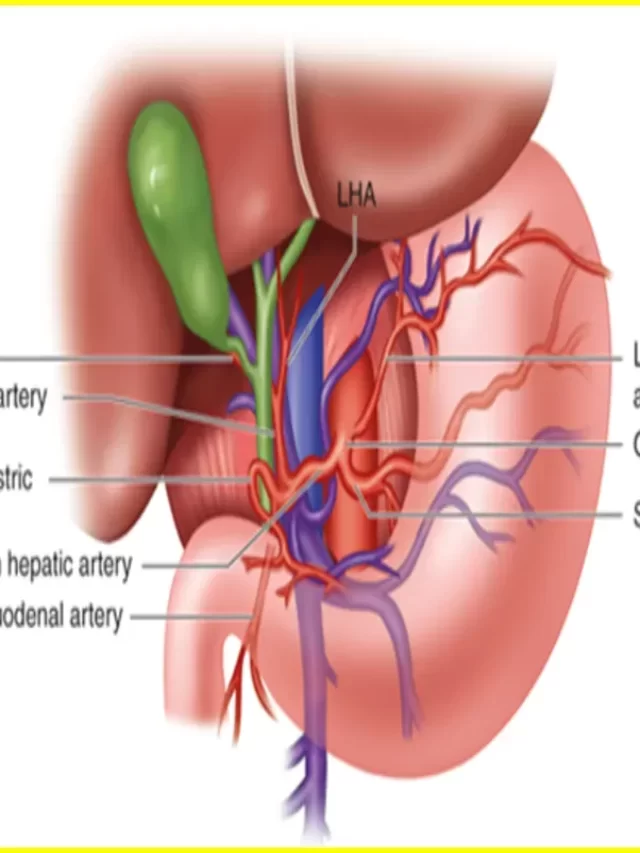
What is a Bronchoscopy
A bronchoscope is a thin, flexible tube that is used during a bronchoscopy, a medical procedure, to examine the lungs and airways. A light and a camera are commonly included in bronchoscopes, which enable medical professionals to see within the respiratory system. Bronchoscopy can provide important details regarding lung disorders and is used for both therapeutic and diagnostic purposes. An outline of the process is provided below:
Preparation:
- Before the bronchoscopy, the patient may be asked to fast for a few hours. Medications may be adjusted as per the healthcare provider’s recommendations. The patient may receive a sedative to help relax during the procedure.
2. Anesthesia:
- Bronchoscopy is often performed under local anesthesia to numb the throat and minimize discomfort. In some cases, mild sedation may also be administered to help the patient relax.
3. Insertion of the Bronchoscope:
- The bronchoscope is a thin, flexible tube with a light and a camera at its tip. It is inserted through the nose or mouth and passed down the throat into the trachea and bronchi.
4. Visualization of Airways:
- As the bronchoscope is advanced through the airways, the camera sends images to a monitor, allowing the healthcare provider to visualize the structures of the trachea and bronchi in real-time.
5. Collection of Samples:
- During the procedure, the healthcare provider may collect various samples for diagnostic purposes:
- Biopsy: Small tissue samples may be taken for laboratory analysis.
- Bronchoalveolar Lavage (BAL): A small amount of saline is introduced into a lung segment and then suctioned back to collect cells and other materials for examination.
- Brush Cytology: A brush at the end of the bronchoscope is used to collect cells for analysis.
6. Therapeutic Interventions:
- Bronchoscopy can be used for therapeutic purposes. For example, it may be used to remove foreign objects, clear airway blockages, or place stents in the airways.

7. Fluoroscopy or Guided Procedures:
- In some cases, bronchoscopy may be guided by fluoroscopy (real-time X-ray) to provide additional visualization during the procedure.
8. Completion of Procedure:
- Once the bronchoscopy is completed, the bronchoscope is carefully removed. The patient is monitored for a short period to ensure there are no immediate complications.
9. Recovery:
- Patients may experience a sore throat or cough after the procedure. Recovery is generally quick, and most patients can resume normal activities after a short period.
Indications for Bronchoscopy:
- Diagnostic Evaluation: Bronchoscopy is used to investigate various lung conditions, including infections, tumors, and inflammatory diseases.
- Treatment: It can be used for therapeutic purposes, such as removing foreign bodies, clearing airway blockages, or treating certain lung conditions.
- Staging of Lung Cancer: Bronchoscopy may be used to stage lung cancer by obtaining samples from lymph nodes or other areas.
Article About:- Health & fitness
Article About:- Medical Technology
Article About:- Sports

How to Bronchoscope Work
In bronchoscope, a doctor inserts a thin, flexible AC tube into the lungs through the mouth or nose. A light and a small camera on the bronchoscope help the doctor see inside the airways of the lungs. Bronchoscopy is a procedure that lets doctors view your lungs and air passages.
Throughout some procedures, special devices square measure versed the medical instrument, like a tool to get a diagnostic assay, an enquiry to regulate injury, a optical maser to scale back the scale of associate airway tumour, or a medical instrument with an inherent ultrasound probe. Risks could include:
a. Bleeding
b. Collapsed respiratory organ
c. Fever
The bronchoscope is used to view the airways of the lungs (tracheobronchial tree). Allows the doctor to collect lung secretions and lung tissue for biopsy for tissue samples. Bronchoscopy is a surgical technique to view the interior of the airways. You may feel tired for 1 or 2 days after this procedure. Your mouth may feel very dry for several hours after the procedure. You may also have a sore throat and a hoarse voice for a few days.
What is the benefit and risk of Bronchoscopy
Benefits of Bronchoscopy:
- Diagnostic Evaluation:
- Identification of Lung Conditions: Bronchoscopy allows for direct visualization of the airways, helping diagnose various lung conditions, including infections, tumors, and inflammatory diseases.
- Sample Collection for Analysis:
- Biopsy: Tissue samples obtained during bronchoscopy can provide valuable information for laboratory analysis, aiding in the diagnosis of lung diseases.
- Bronchoalveolar Lavage (BAL): Fluid collected during BAL can be analyzed to identify infections, inflammation, or abnormal cells.
- Brush Cytology: Cells collected using a brush can be examined for abnormalities.
- Staging of Lung Cancer:
- Bronchoscopy may be used to stage lung cancer by obtaining samples from lymph nodes or other areas, helping guide treatment decisions.
- Therapeutic Interventions:
- Removal of Foreign Bodies: Bronchoscopy can be used to remove foreign objects or aspirated material from the airways.
- Airway Clearance: It can help clear airway blockages caused by mucus, blood, or other obstructions.
- Stent Placement: Stents can be placed in the airways to address narrowing or blockages.
- Guided Procedures:
- Fluoroscopy: In some cases, bronchoscopy may be guided by fluoroscopy, providing real-time X-ray images to assist with interventions.
- Monitoring Response to Treatment:
- Bronchoscopy can be used to monitor the response to treatment, such as the effectiveness of medications or the resolution of certain conditions.
- Minimally Invasive:
- Bronchoscopy is a minimally invasive procedure that can be performed on an outpatient basis. It avoids the need for more invasive surgical procedures in many cases.
Risks and Considerations:
- Discomfort and Sore Throat:
- Common Side Effects: Patients may experience a sore throat, cough, or hoarseness following the procedure. These effects are usually temporary.
- Bleeding:
- Risk of Bleeding: Biopsies or other procedures during bronchoscopy can carry a risk of bleeding, especially in individuals with certain medical conditions or those taking blood-thinning medications.
- Infection:
- Infection Risk: While bronchoscopy itself is generally a sterile procedure, there is a minimal risk of infection, especially if there is pre-existing lung infection.
- Pneumothorax:
- Rare Complication: In rare cases, bronchoscopy may lead to the development of a pneumothorax (air in the pleural cavity around the lungs).
- Allergic Reactions:
- Reaction to Anesthesia or Medications: Some individuals may experience allergic reactions to the anesthesia or medications used during the procedure.
- Cardiovascular Events:
- Risk for Certain Patients: Individuals with underlying cardiovascular conditions may be at a higher risk of cardiovascular events during or after bronchoscopy.
- Complications from Therapeutic Interventions:
- Complications from Stent Placement or Foreign Body Removal: Therapeutic interventions, such as stent placement or foreign body removal, may carry additional risks, and complications can occur.
- Limited Visualization:
- Limited Reach: Bronchoscopy has limitations in visualizing certain areas of the lungs, especially those deep in the periphery.
- False-Negative Results:
- Diagnostic Limitations: There is a possibility of false-negative results, where the procedure may not detect certain conditions or abnormalities.

What is the Working Principle of Bronchoscopy
Bronchoscopy operates on the basis of seeing and accessing the lungs and airways using a bronchoscope, which is a thin, flexible tube equipped with a light and a camera. Diagnostic and therapeutic uses of bronchoscopy are common in medicine. The working principle is summarized as follows:
- Bronchoscope Insertion:
- The bronchoscope is typically inserted through the nose or mouth and advanced through the throat into the trachea. In some cases, it may be introduced through a pre-existing tracheostomy or stoma.
- Visualization of Airways:
- As the bronchoscope is advanced, the light at its tip illuminates the airways, and the camera captures real-time images of the trachea, bronchi, and bronchioles. These images are transmitted to a monitor for the healthcare provider to view.
- Flexible or Rigid Bronchoscope:
- Bronchoscopes can be either flexible or rigid. Flexible bronchoscopes are more maneuverable and can navigate through the intricate bronchial tree, while rigid bronchoscopes are more stable and allow for larger working channels.
- Local Anesthesia and Sedation:
- Before the procedure, local anesthesia is often applied to the back of the throat to numb the area and reduce discomfort. Additionally, mild sedation may be administered to help the patient relax.
- Airway Examination:
- The healthcare provider examines the airways, looking for abnormalities such as tumors, inflammation, strictures, or foreign bodies. The bronchoscope can be directed to specific areas of interest.
- Sample Collection:
- For diagnostic purposes, samples may be collected during bronchoscopy:
- Biopsy: Small tissue samples may be taken for laboratory analysis.
- Bronchoalveolar Lavage (BAL): A small amount of saline is introduced and then suctioned back to collect cells and fluids for analysis.
- Brush Cytology: A brush at the end of the bronchoscope may be used to collect cells for examination.
- For diagnostic purposes, samples may be collected during bronchoscopy:
- Therapeutic Interventions:
- Bronchoscopy can be used for therapeutic purposes:
- Removal of Foreign Bodies: Objects lodged in the airways can be removed using specialized instruments.
- Airway Clearance: Mucus plugs or other obstructions can be cleared.
- Stent Placement: Stents can be placed to address narrowing or blockages.
- Bronchoscopy can be used for therapeutic purposes:
- Fluoroscopy (Guided Procedures):
- In some cases, bronchoscopy may be guided by fluoroscopy (real-time X-ray) to provide additional visualization during therapeutic interventions.
- Monitoring and Documentation:
- Throughout the procedure, the healthcare provider monitors the patient’s vital signs. The findings and any samples collected are documented for further analysis.
- Completion of Procedure:
- Once the examination, sampling, or therapeutic interventions are completed, the bronchoscope is carefully removed.
- Recovery and Post-Procedure Care:
- After the procedure, patients are monitored for a short period to ensure stability. Post-procedure care includes addressing any discomfort, providing instructions, and discussing the results with the patient.

FAQ
Why would someone need a bronchoscopy?
Frequently, a bronchoscope is performed for the following purposes: An imaging test revealed abnormal lung abnormalities, such as a tumor or growth, lung tissue alterations or scarring, or partial lung collapse. to biopsy your lungs’ surrounding lymph nodes. to determine the cause of your bloody cough.
Is it painful having a bronchoscopy?
The bronchoscope is gently moved past the vocal chords, into the airways, and into the back of your throat. It shouldn’t hurt, even if it might seem awkward.
How long does a bronchoscopy take?
The bronchoscope will be inserted into your lung through your nose or mouth by the doctor once you’ve been anesthetized. A team member will give you more medicine if you show indications of pain until you feel comfortable. An average bronchoscope takes thirty to forty-five minutes.
Are you put to sleep for a bronchoscopy?
Throughout the process, you will be conscious. A sedative (a medication that helps you relax) will be administered to you. In addition, a liquid medication to numb your throat and nose will be administered. You will be put under general anesthesia for a rigid bronchoscopy.
Is bronchoscopy better than CT scan?
While bronchoscope and CT were equally effective in determining the location of bleeding (70% vs. 73%, respectively), CT was more effective at determining the source of bleeding (77% vs. 8%, respectively).
Can bronchoscopy detect TB?
Microscopy and culture of several sources, such as ordinary sputum, induced sputum, stomach washings, and bronchoscope, can be used to diagnose pulmonary tuberculosis.
How much does a bronchoscopy cost?
A bronchoscope might cost anything from $808 to $1,260 on MDsave.









